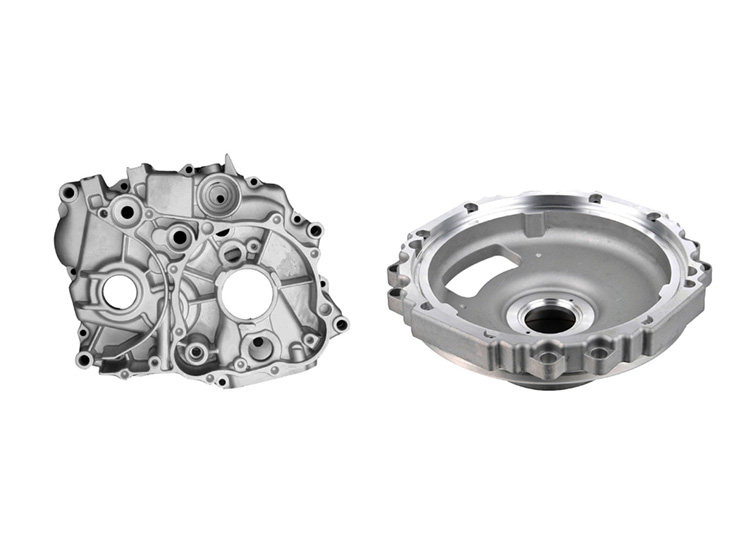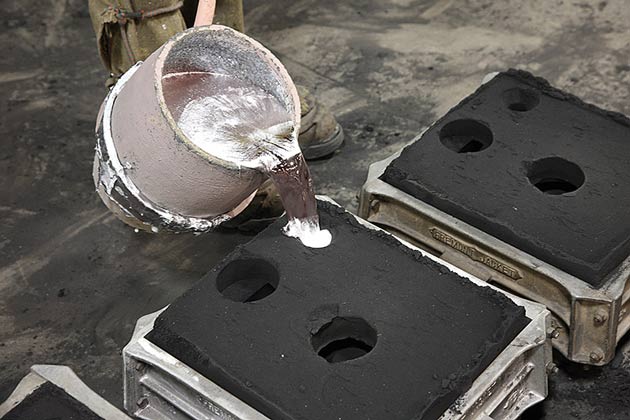Stahl Specialty Company for Beginners
Stahl Specialty Company for Beginners
Blog Article
See This Report about Stahl Specialty Company
Table of ContentsThe Main Principles Of Stahl Specialty Company A Biased View of Stahl Specialty CompanyLittle Known Facts About Stahl Specialty Company.Excitement About Stahl Specialty CompanyThe 5-Minute Rule for Stahl Specialty CompanyRumored Buzz on Stahl Specialty Company

If you're making a metal item, you have actually likely considered using aluminum as the base material. Pure light weight aluminum has restricted applications, so it is usually combined with various other aspects, such as silicon, magnesium, and manganese to develop alloys.
Different aspects and quantities generate a wide range of desirable physical and chemical homes. And the Light weight aluminum Association (AA), based in North America, has developed requirements that manage light weight aluminum alloys' structure, residential or commercial properties, and nomenclature. There are 2 kinds of light weight aluminum alloys wrought and cast. Factory workers create these alloy enters various ways, which significantly affects their attributes.
Some Ideas on Stahl Specialty Company You Should Know
Cast light weight aluminum alloys are made by thawing pure aluminum and incorporating it with other steels while in liquid type. Then the mix is put into a sand, pass away, or investment mold and mildew. After solidification, the metal is gotten rid of from its mold and mildew. At this phase, it remains in either its last form or as a billet or ingot for more processing.

The fourth digit, which comes after the decimal factor, defines if the alloy is a spreading (xxx. Wrought aluminum alloys likewise begin by integrating molten aluminum with other steels. In comparison to cast alloys, nonetheless, they are formed into their final shape through procedures such as extrusion, rolling, and bending after the steel has strengthened right into billets or ingots.
There are many small distinctions between wrought and cast light weight aluminum alloys, such as that cast alloys can have much more considerable amounts of other metals than functioned alloys. Yet the most notable distinction in between these alloys is the construction process where they will certainly go to provide the last item. In addition to some surface therapies, cast alloys will certainly leave their mold and mildew in nearly the precise solid kind wanted, whereas functioned alloys will certainly undergo several modifications while in their strong state.
If you think that a wrought alloy might be the most effective for your task, take a look at some of our articles that explain even more about certain wrought alloys, such as Alloy 6061 and Alloy 6063. On the other hand, if you assume an actors alloy would certainly be much better for you, you can discover more about some actors alloys in our Alloy 380 and Alloy 383 short articles (coming soon).
Facts About Stahl Specialty Company Uncovered
When selecting a light weight aluminum foundry for your manufacturing needs, it's vital to examine numerous factors. Among one of the most critical facets to think about is the experience and competence of the shop. Aluminum Castings. Selecting a shop who has the appropriate expertise of the aluminum spreading procedure, and the profile to reveal for it, helps to have a successful end result for your job
Having the experience and industry knowledge to craft your castings for optimum production and quality outcomes will certainly streamline the job. Making aluminum spreading calls for a facility collection of procedures to attain the appropriate results. When choosing a brand-new aluminum shop to companion with, ensure they have extensive market experience and are knowledgeable regarding all facets of the light weight aluminum casting procedure: layout, production, material evaluation, and product testing.
The shop ought to also have a tested performance history of providing remarkable products that satisfy or surpass client expectations. Quality control ought to additionally be at the top of your checklist when picking a light weight aluminum shop. By collaborating with a qualified foundry who adheres to the standards for quality assurance, you can safeguard the honesty of your item and ensure it satisfies your specs.
By choosing a business that offers solutions that satisfy or surpass your item requirements, you can be sure that your job will certainly be completed with miraculous accuracy and performance. Specific light weight aluminum shops concentrate on particular kinds of producing procedures or casting techniques. Different components call for different production methods to cast light weight aluminum, such as sand spreading or pass away spreading.
A Biased View of Stahl Specialty Company
Die spreading is the name offered to the procedure of developing complicated metal components with use of molds of the element, additionally referred to as passes away. The procedure utilizes non-ferrous steels which do not contain iron, such as aluminum, zinc and magnesium, because of the desirable residential or commercial properties of the metals such as low weight, greater conductivity, non-magnetic conductivity and resistance to deterioration.
Die casting production is fast, making high manufacturing levels of components simple. It creates even more components than any type of other process, with a high degree of precision and repeatability. For more information regarding die casting and die casting materials used in the procedure, kept reading. There are three sub-processes that drop under the category of die spreading: gravity die casting (or long-term mold and mildew casting), low-pressure die spreading and high-pressure die casting.
Despite the sub-process, the die spreading process can be broken down right into 6 actions. After the pureness of the alloy is examined, passes away are developed. To prepare the needs spreading, it is important that the dies are tidy, to make sure that no deposit from previous productions continue to be. After cleansing, the ejection lubrication is applied to the die to ensure a smooth launch.
The 3-Minute Rule for Stahl Specialty Company
The pure metal, additionally referred to as ingot, is contributed to the heater and maintained the molten temperature level of the metal, which is after that moved to the shot chamber and injected into the die. The pressure is after that kept as the steel solidifies. As soon as the metal solidifies, the cooling procedure starts.
(https://www.quora.com/profile/Stahlspecialc)
The thicker the wall of the part, the longer the cooling time since of the quantity of interior metal that additionally requires to cool. After the component is completely cooled down, the die halves open and an ejection device pushes the part out. Adhering to the ejection, the die is closed for the next injection cycle.
The flash is the additional material that is cast during the process. This need to be cut off making use of a trim tool to leave simply the main component. Deburring removes the smaller sized pieces, called burrs, after the cutting process. Ultimately, the part is brightened, or burnished, to provide it a smooth surface.
The Only Guide to Stahl Specialty Company

Zinc is among the most pre-owned alloys for die casting as a result of its reduced price of raw materials. It's likewise one of the stronger and steady metals. Plus, it has excellent electric and thermal conductivity. Its deterioration resistance also allows the parts to be lengthy enduring, and it is one of the a lot more castable alloys because of its lower melting point - Aluminum Castings.
As discussed, this alloy is one of the most generally made use of, yet manufactures will, at times, pick light weight aluminum over zinc due to light weight aluminum's manufacturing benefits. Aluminum is very cost-effective and among the much more functional alloys. Light weight aluminum get redirected here is utilized for a number of different items and markets anything from window structures to aerospace materials.
Report this page